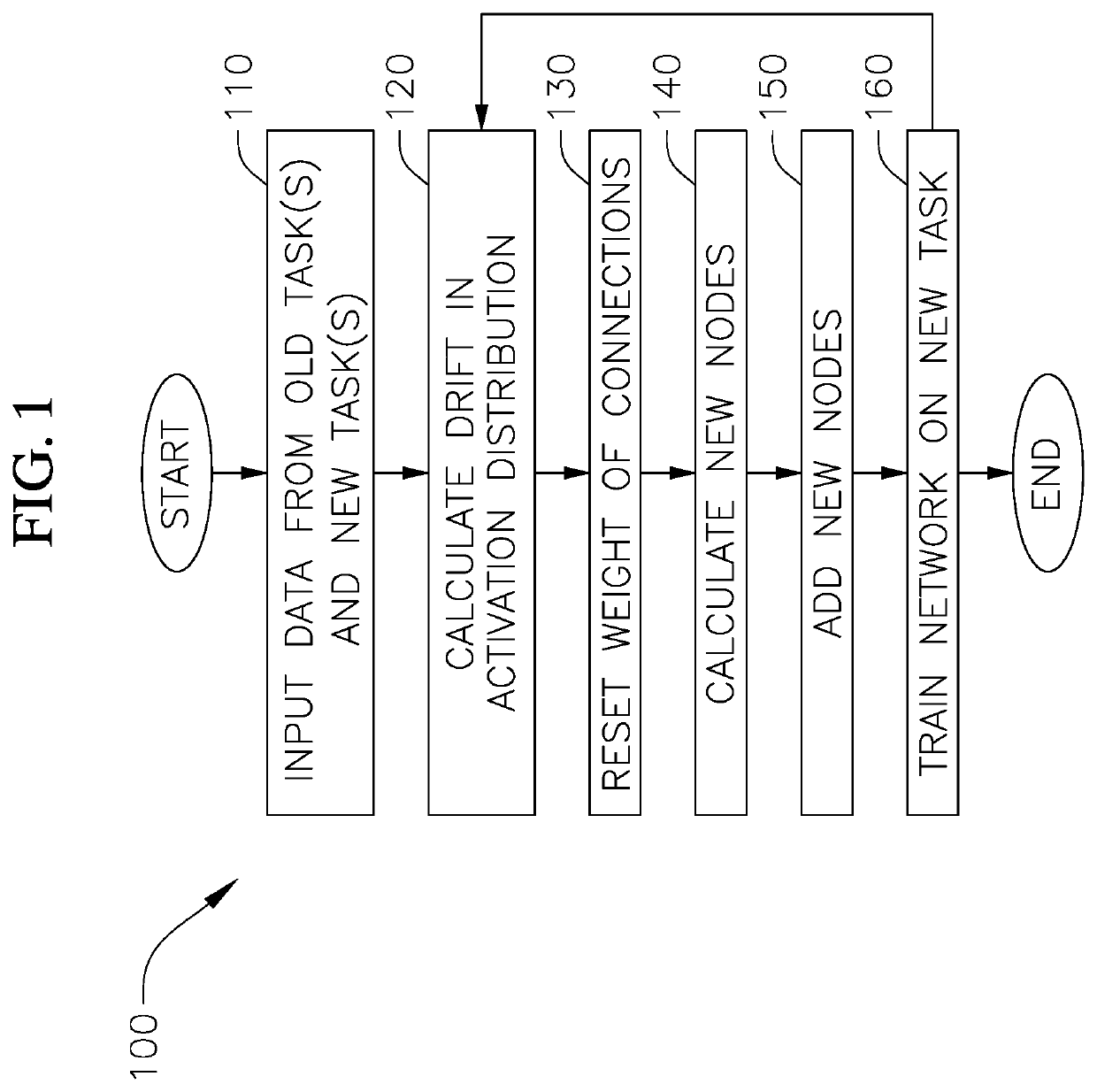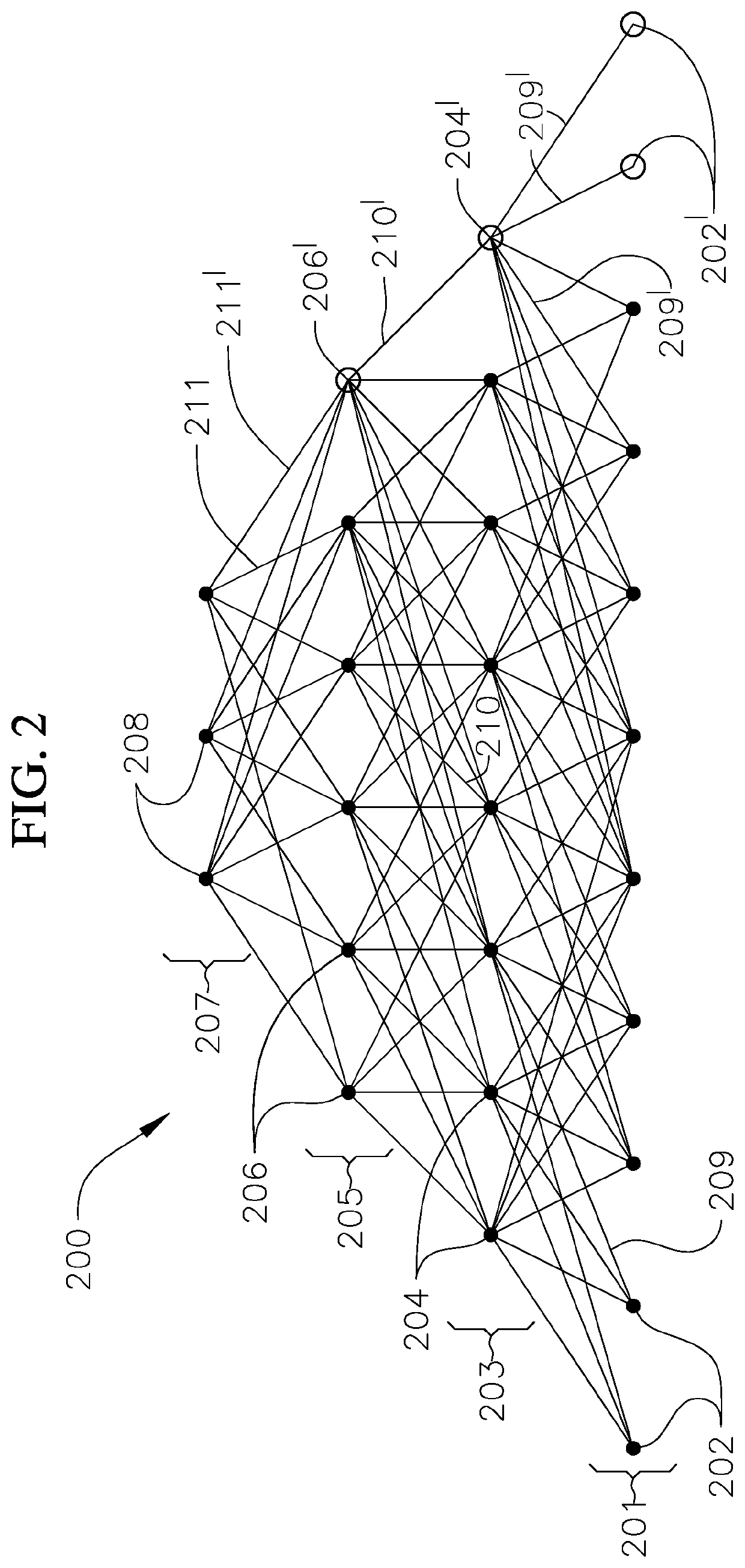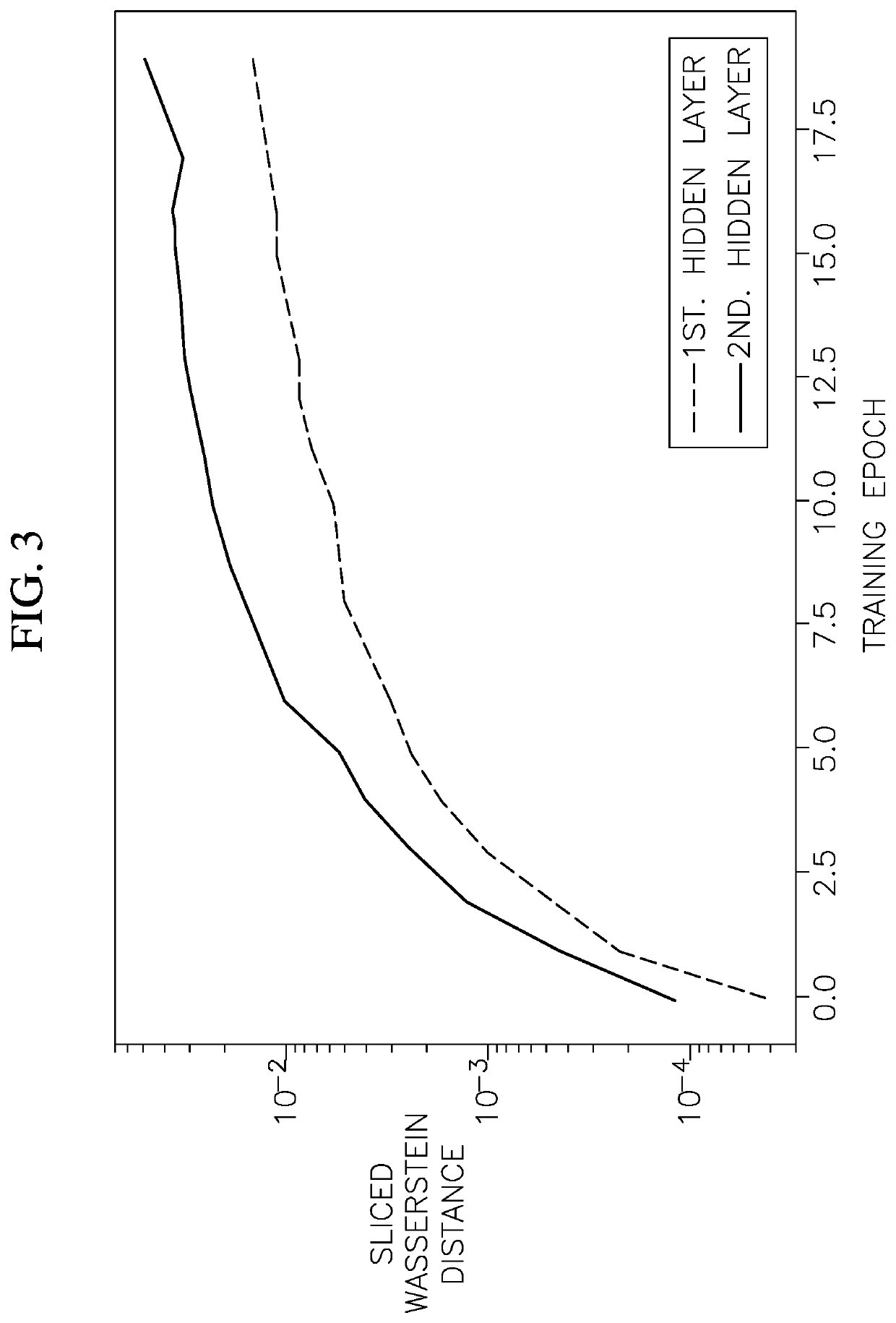Artificial neural network and method of training an artificial neural network with epigenetic neurogenesis
a neural network and artificial neural network technology, applied in the field of artificial neural networks and methods of training artificial neural networks with epigenetic neurogenesis, can solve the problems of artificial neural network information storage capacity, affecting the accuracy of artificial neural network training, and reducing the ability of artificial neural network to store information,
- Summary
- Abstract
- Description
- Claims
- Application Information
AI Technical Summary
Benefits of technology
Problems solved by technology
Method used
Image
Examples
Embodiment Construction
[0035]The present disclosure is directed to various embodiments of a method of training an artificial neural network, which has already been trained on data from one or more old tasks, on data from one or more new tasks. In one or more embodiments, the methods of the present disclosure utilize epigenetic neurogenesis, which includes adding new nodes and connections to the artificial neural network to enable learning of one or more new tasks without performance degradation or substantially without performance degradation of the previously learned tasks (i.e., without catastrophic forgetting of the one or more old tasks that the artificial neural network was trained to perform). Additionally, the method of the present disclosure is configured to integrate the knowledge acquired on the one or more olds tasks with new information to improve performance of the new task with fewer training examples by training both the old and new connections. Furthermore, the methods of the present discl...
PUM
 Login to View More
Login to View More Abstract
Description
Claims
Application Information
 Login to View More
Login to View More - R&D
- Intellectual Property
- Life Sciences
- Materials
- Tech Scout
- Unparalleled Data Quality
- Higher Quality Content
- 60% Fewer Hallucinations
Browse by: Latest US Patents, China's latest patents, Technical Efficacy Thesaurus, Application Domain, Technology Topic, Popular Technical Reports.
© 2025 PatSnap. All rights reserved.Legal|Privacy policy|Modern Slavery Act Transparency Statement|Sitemap|About US| Contact US: help@patsnap.com



